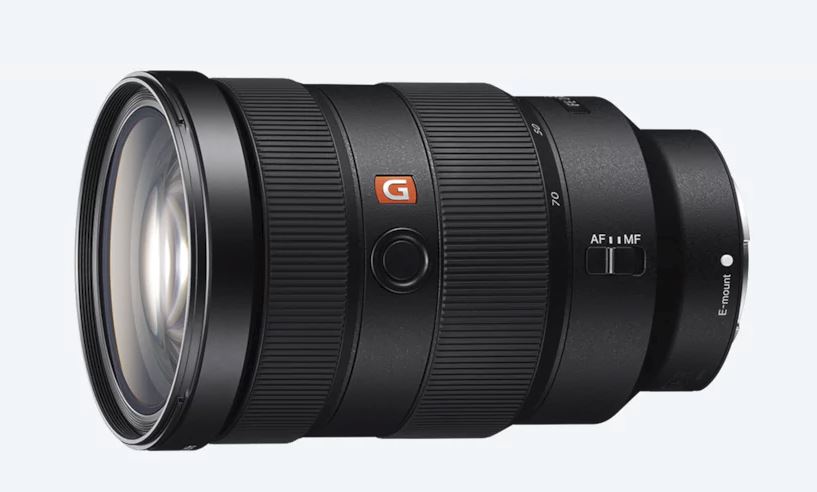IS SONY FE 24-70 F2.8 GM LENS STILL WORTH BUYING?
LENS NAME AND IMAGE
SONY FE 24-70mm F2.8 GM (SEL2470GM) is Sony’s current highest-end Full Frame E-mount (FE) lens (GM) for the A7 and A9 series (A9, A7/r 1, 2,3…). The focal length range from 24-70mm is very popular for daily life and event photography because you can zoom near and far very conveniently. In landscapes, this focal length is good for large ponds, lakes and low mountains or for angles that cannot be approached but are within the range of this focal length range.

SPECIFICATIONS NEED TO KNOW
Filter thread: 82mm.
Closest focus: 0.38mm.
Weight: 886g.
SUNSTAR
ABOUT SUNSTAR
Of all the lens properties, sunstar is the most difficult to achieve for many reasons. Some lens designers have difficulty achieving beautiful sunstars because there are many other factors that must be balanced, prioritized, or limited. Such as prioritizing sharpness, purple edges, distortion or limiting size, weight… Some other designers do not understand the uniqueness of sunstars in photography and sometimes accidentally create excellently beautiful sunstars for themselves. one version, then the newer lens design has a sunstar that is not as nice.
The quality of a beautiful sunstar includes the number of rays, the shape of the sunstar, the flare within the shape of the sunstar and the F aperture to create the sunstar. The number of rays of the sunstar is basically determined by the number of aperture blades such as an even number of aperture blades creates the same number of rays as the number of aperture blades and an odd number of aperture blades creates twice the number of rays. However, the number of sunstar blades can also be increased in some ultra-wide lens designs.
LENS WITH BEAUTIFUL SUNSTAR AND PRETTY QUALITY
The SONY FE 24-70 F/2.8 GM lens has 9 aperture blades creating an 18-bladed sunstar. The 18-blade beam is very beautiful when shooting through an object (like the mountain in the photo below), the remaining half has 9 blades just beautiful enough. The ray tip is quite pointed so in general the ray shape is quite clear and quite beautiful. Like most other lenses, this lens’s Sunstar looks best when zoomed down to f16. Closer than f16 will cause more diffraction and reduce contrast as well as sharpness significantly.In moderate light and without using a GND or ND filter, the sunstar is quite clean, with no flare in the sunstar.
In strong light conditions, high contrast, or if you use a filter, there will be a lot of flare spots. Armed with this knowledge you can capture beautiful sunstars. In addition, you can handle sunstar flares in post-production or have to combine multiple images (exposure blending).
SHARPNESS
ABOUT SHARPNESS
Lenses are sharpest when focused precisely, like focusing with MF using EVF and peaking. The most common reason for an image to be out of focus is due to incorrect focus, or due to insufficient field of view (DOF) for the area that needs focus. Next, the sharpest sharpness of a lens is also different at each aperture f. Most lenses are sharpest at f/5.6 and f8. The further away from these two f apertures, the sharper the sharpness is reduced, and the decrease is greatest when opened as large or as small as possible. In landscapes, I usually shoot at f/11 to provide enough field of view at the edges and corners and not be too far from the sharpest aperture of the lens. When shooting sunstars, I use f/16 for most lenses except the Voigtlander lens and absolutely avoid using f22 to avoid losing too much image quality due to diffraction.
LENS HAS EXCELLENT SHARPNESS
The GM series and 24-70mm focal length are the most popular and high-end segment, so Sony has newly designed and manufactured with new technology to achieve high definition to meet the current 42mp sensor and for the future. hybrid at 100mp. To achieve this, the lens must be designed larger, removing the limitation of keeping the lens small, because the larger the lens size (at the same aperture), the easier it is to design higher quality. That’s why the high-end Zeiss Otus and Sigma Art lens lines are larger in size than normal lines.
DISTORTION
Distortion is the phenomenon in which details in reality are straight but through the lens are shown to be curved in, out or curved in a variety of ways. Different from the tilt distortion of straight lines converging in one direction, this is a perspective phenomenon commonly seen at wide focal lengths. This is not distortion, because the straight lines are still straight, it’s just that they fall (converge). ) to a point at infinity.
Zoom lenses are much more optically complex than prime lenses, so zoom lenses face many design priorities and limitations. The 24-70mm focal length range is mainly for everyday life and events, so distortion is not a priority factor for this type of lens. The priority non-distortion lens is usually a wider focal length of 24mm, suitable for architectural genres, and is usually a fixed lens or a lens with a shift function to adjust the perspective of the building. So this Sony FE 24-70mm f2.8 GM lens has average distortion and is equivalent to similar lenses from Nikon and Canon
CHROMATIC ABERRATION
Chromatic Aberration (CA) is an aberration, an optical error of the lens that is shown by a purple border error with a blue border often found in backlit details (eg backlit tree leaves in the image below).The CA of the Sony FE 24-70mm f2.8 GM is very low, so it is at an excellent level, even if the lens does not need CA processing in post-production. Below is the CA before and after processing, you will see that the lens has almost no CA so after processing you can’t see any difference.
BOKEH QUALITY
Bokeh quality is the smoothness of the blurred area (the part outside the focus area). This is one of Sony’s top criteria when starting to produce this GM lens line. To have truly smooth bokeh, the gloss (smoothness) of the lens surface must reach a new level, higher than the level of processing equipment currently provided to lens manufacturers on the market. To achieve this, Sony had to create a new generation of production machines to meet this high demand. As a result, the GM line in general and the Sony 24-70mm GM lens have the smoothest bokeh of any 24-70mm on the market at the time of this writing.
Pros and Cons
Pros:
- Excellent sharpness and image quality.
- Constant f/2.8 aperture.
- Robust build quality and weather sealing.
- Fast and accurate autofocus.
- Pleasing bokeh.
Cons:
- Relatively heavy and bulky compared to some alternatives.
- Expensive, though justified by its performance and build.
CONCLUSION
The Sony FE 24-70mm f2.8 GM lens is an excellent lens in terms of sharpness, Chromatic Aberration (very little purple fringing, blue fringing) with beautiful and quite good quality Sunstar. Distortion at 35mm and 50mm is good, at 24mm and 70mm it’s average, but the distortion of other 24-70 lenses from Nikon and Canon is no better. In some high contrast lighting conditions, the lens has a lot of flare, but you can limit it by not using a filter in this case.
If you need a top quality 24-70mm lens for Sony FE (A9, A7x/xxx…), and the investment value is lower than its use value, this is the best choice on the market at this time. current point.
